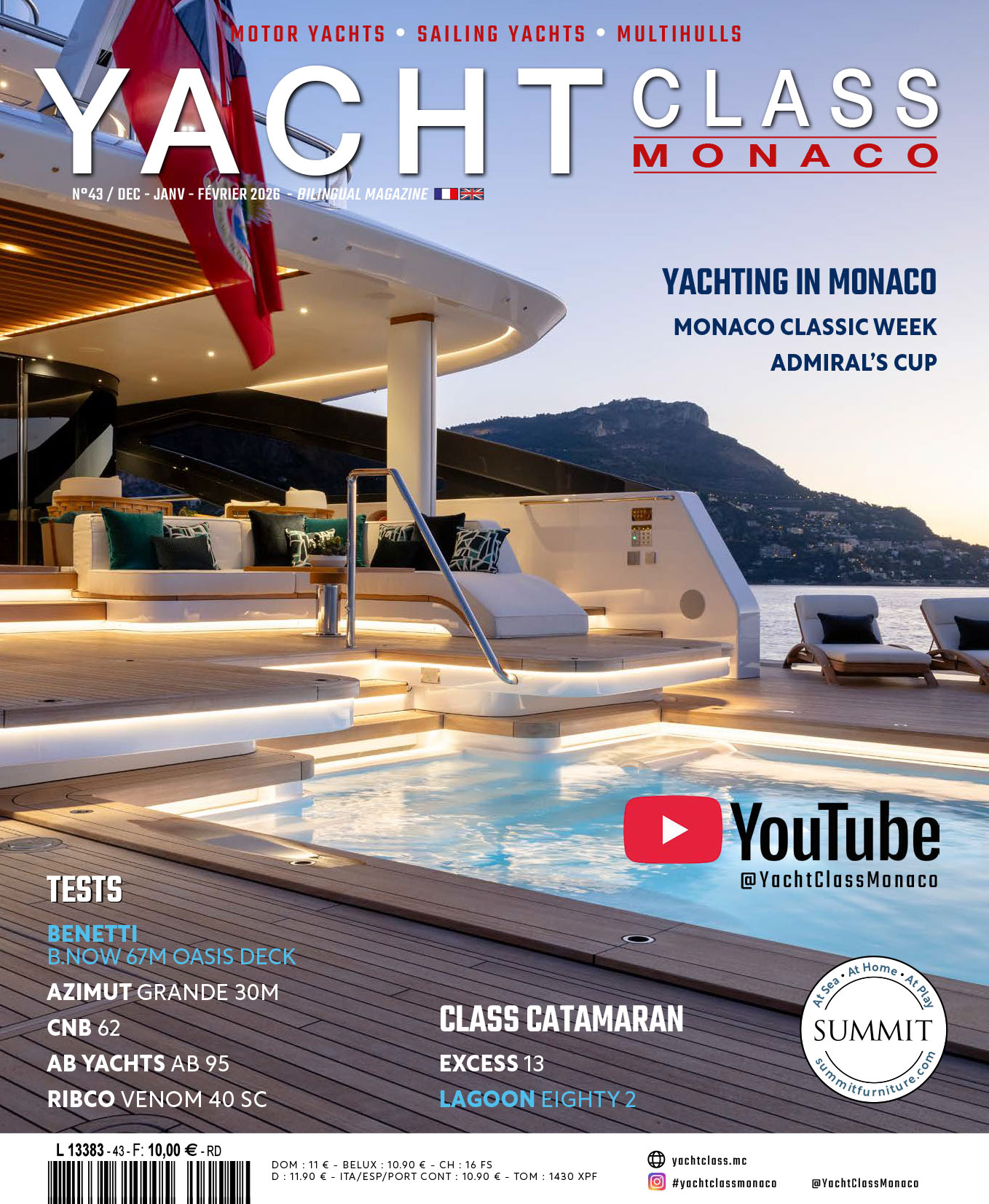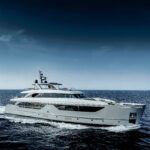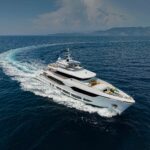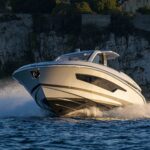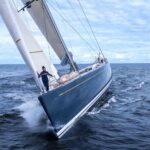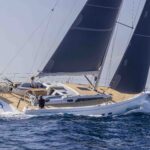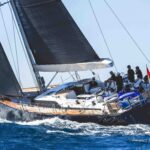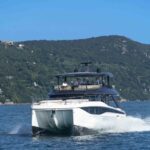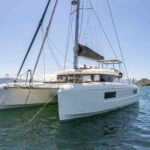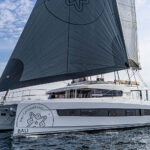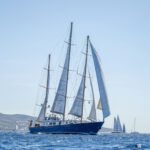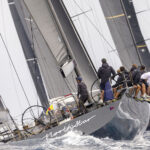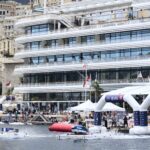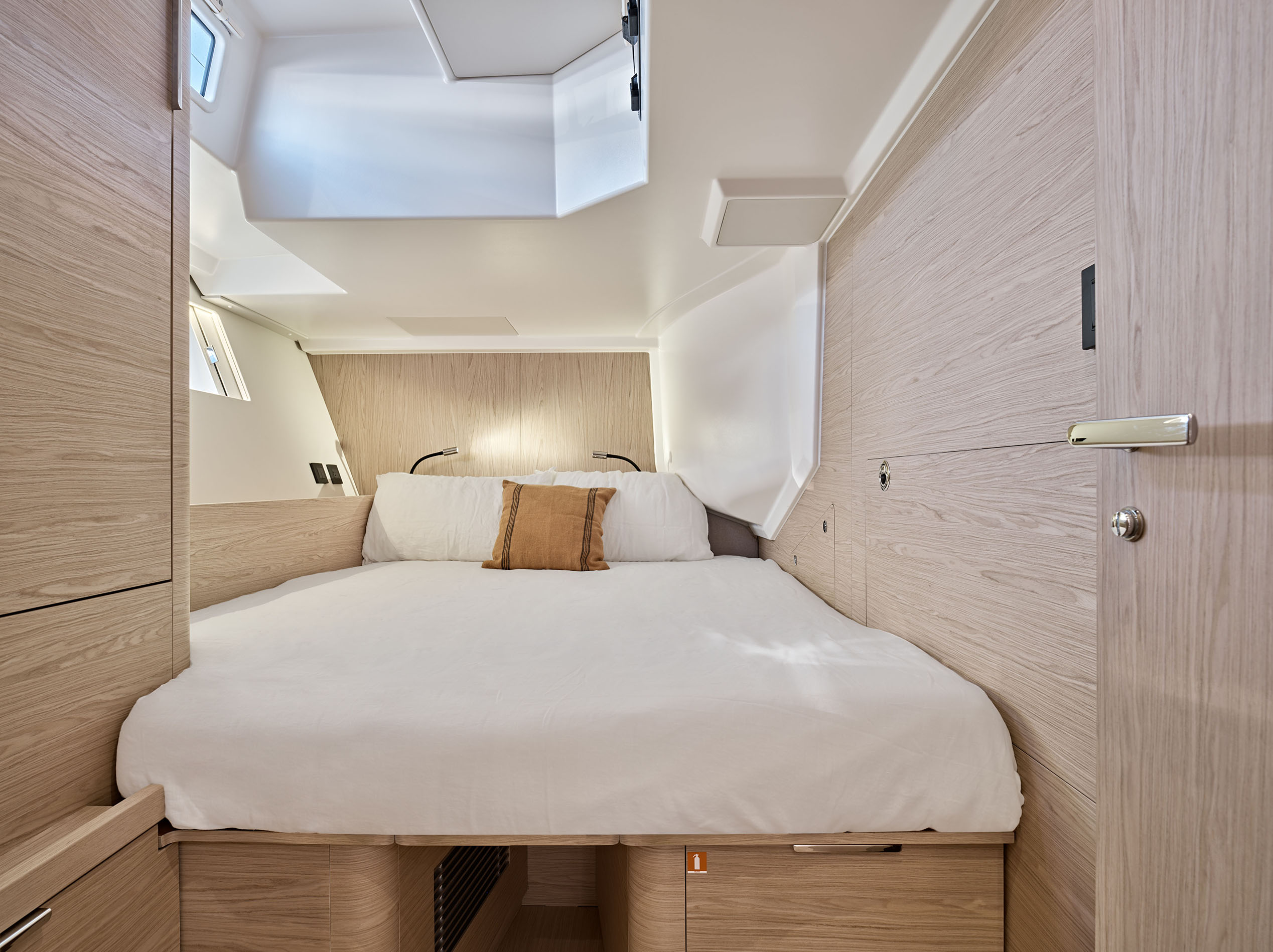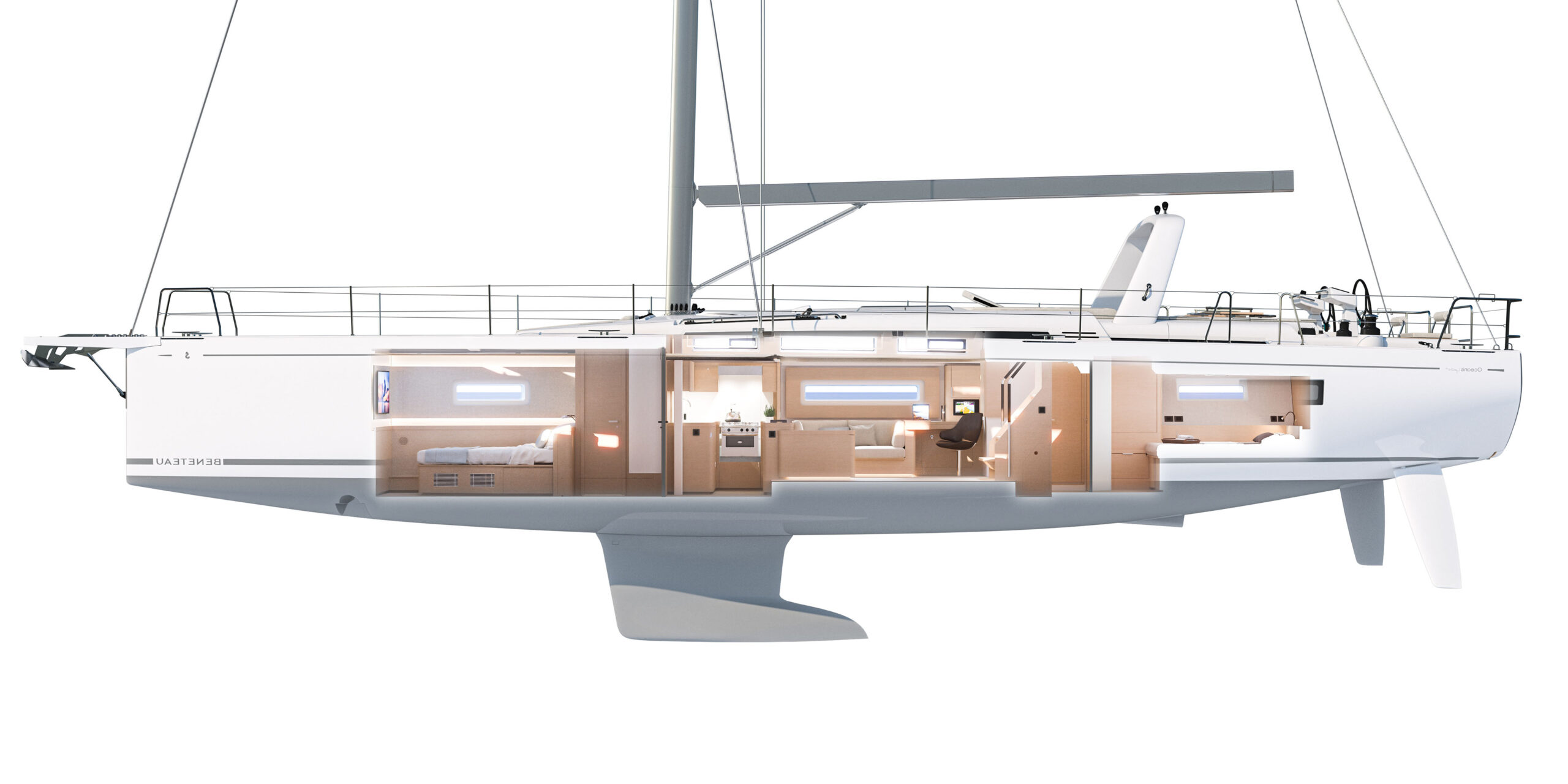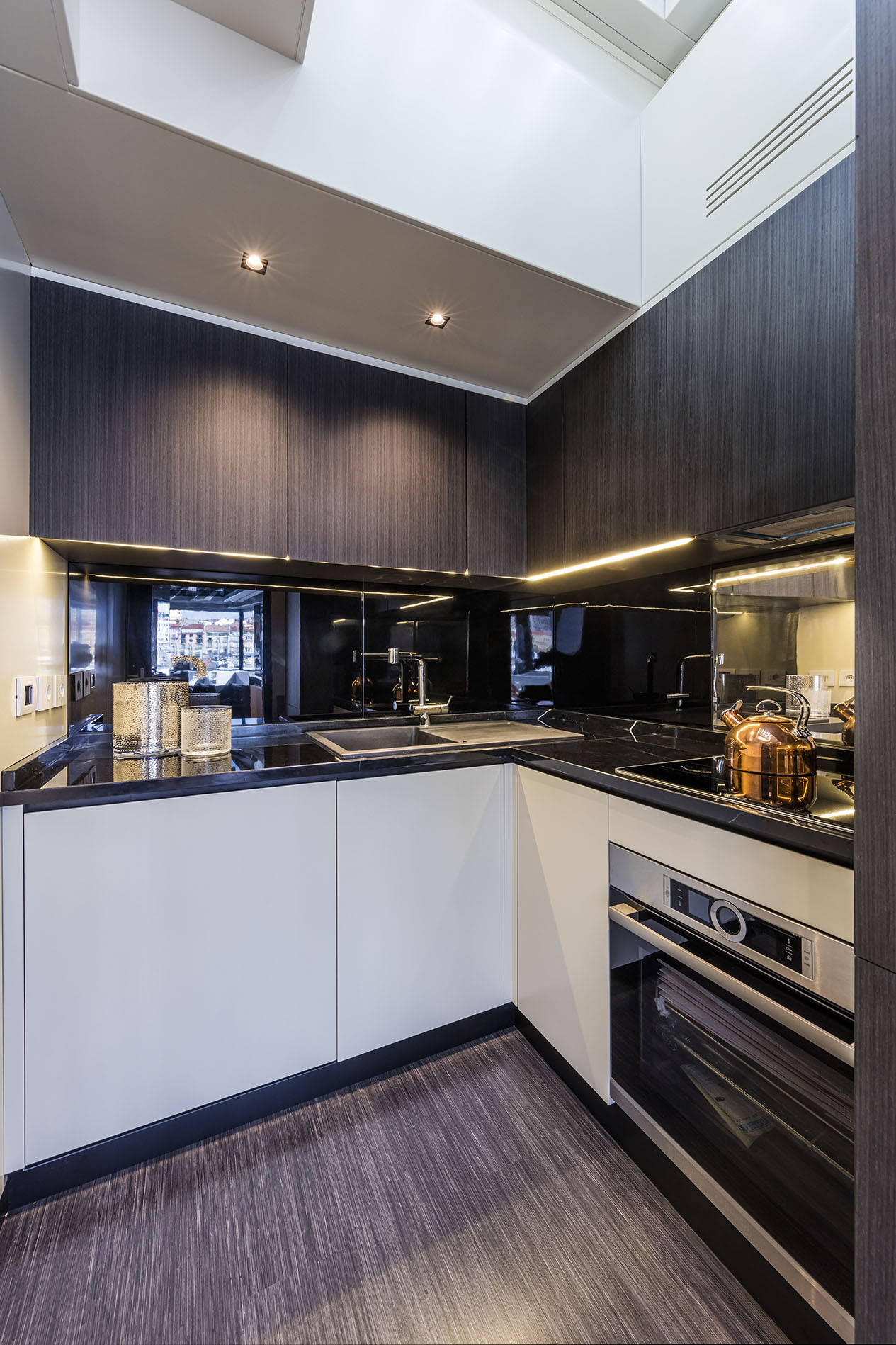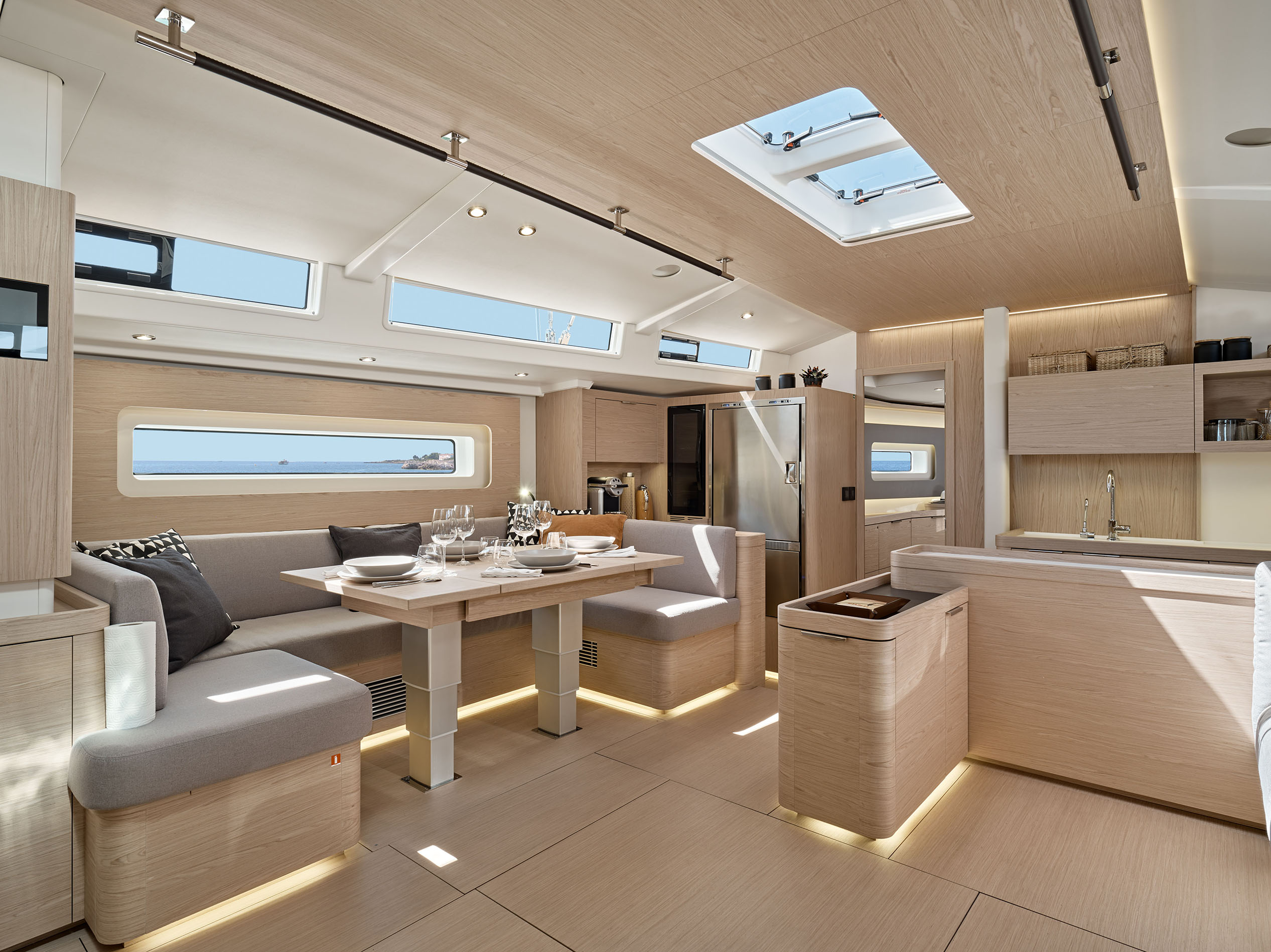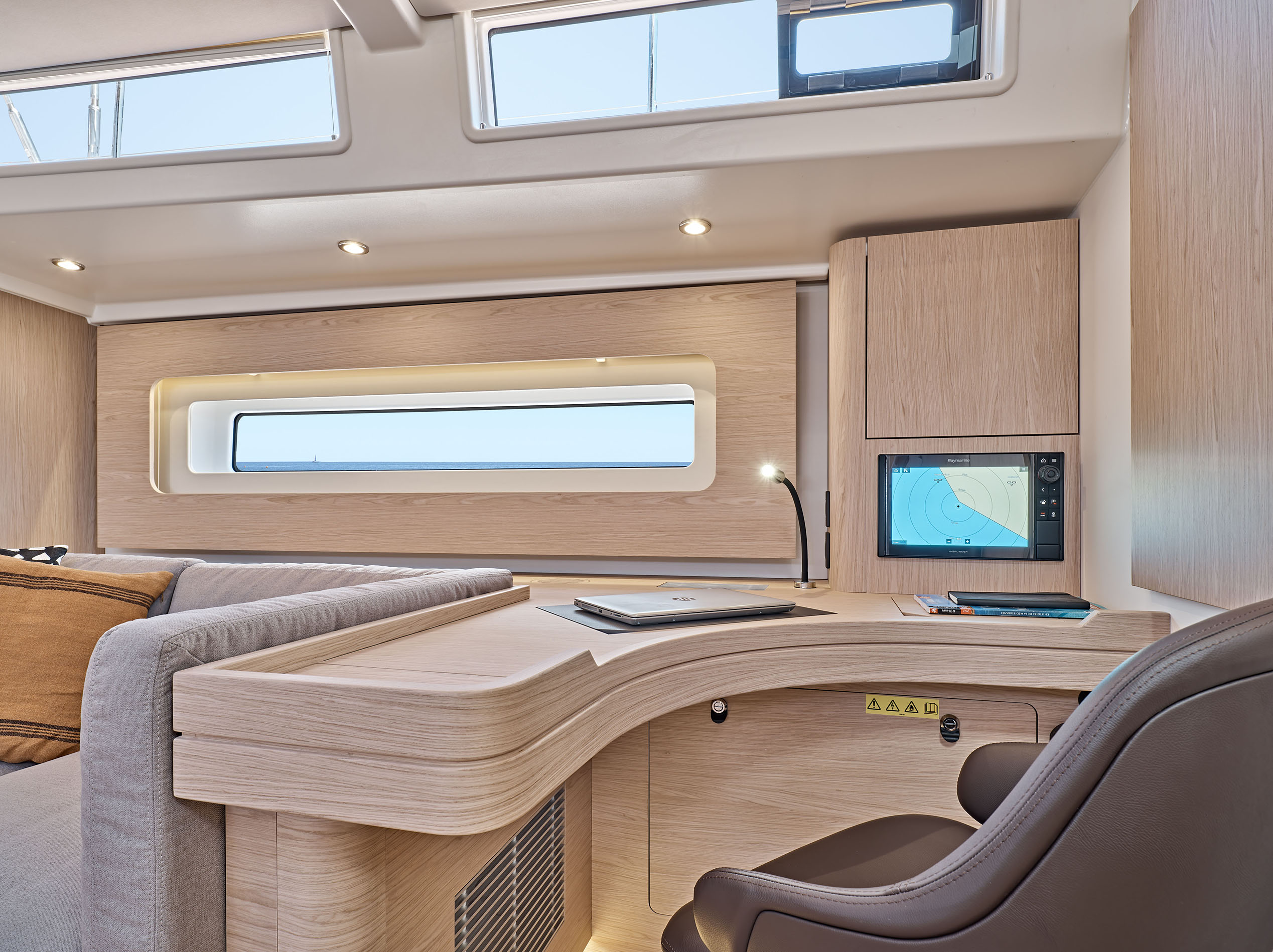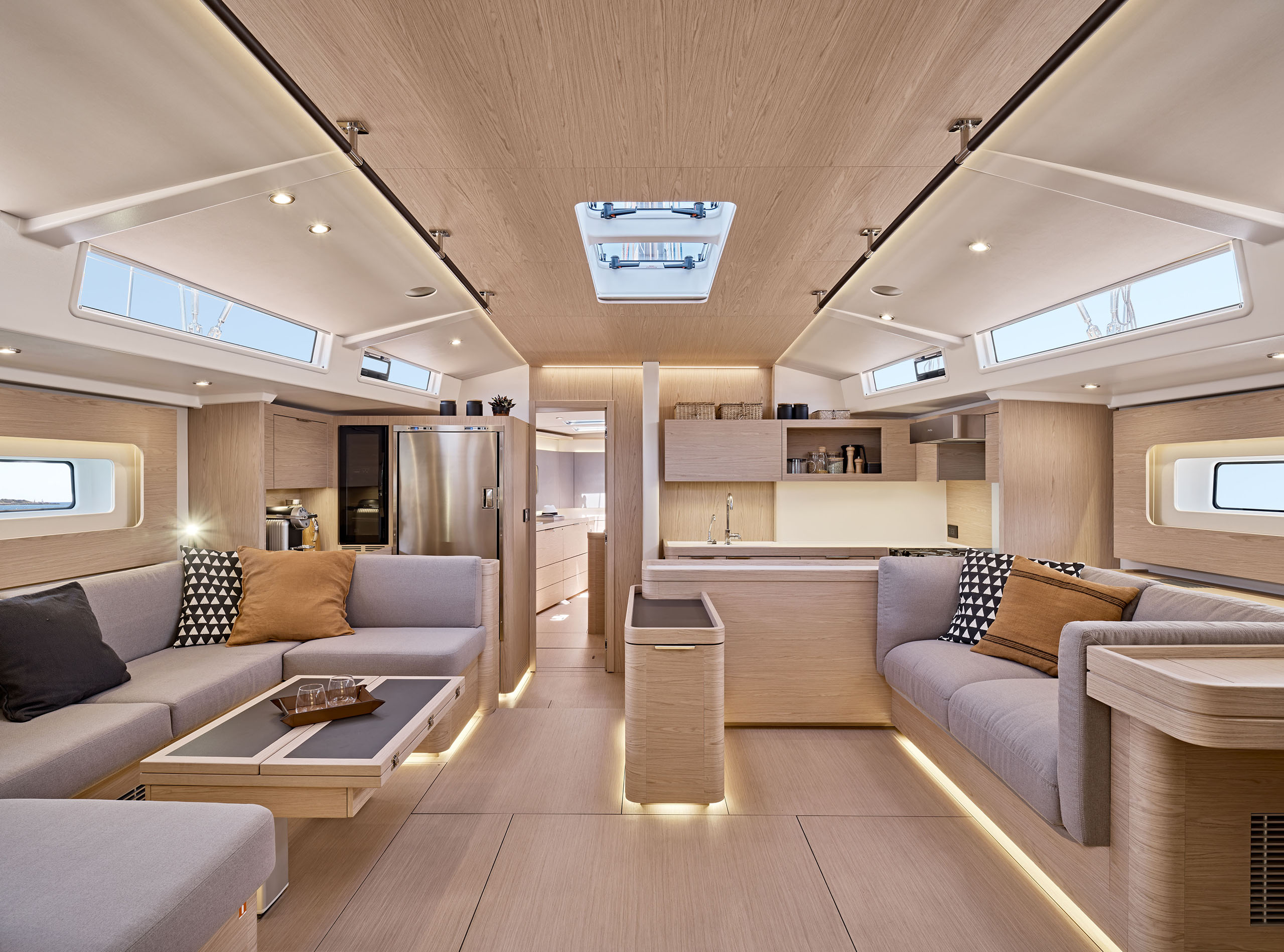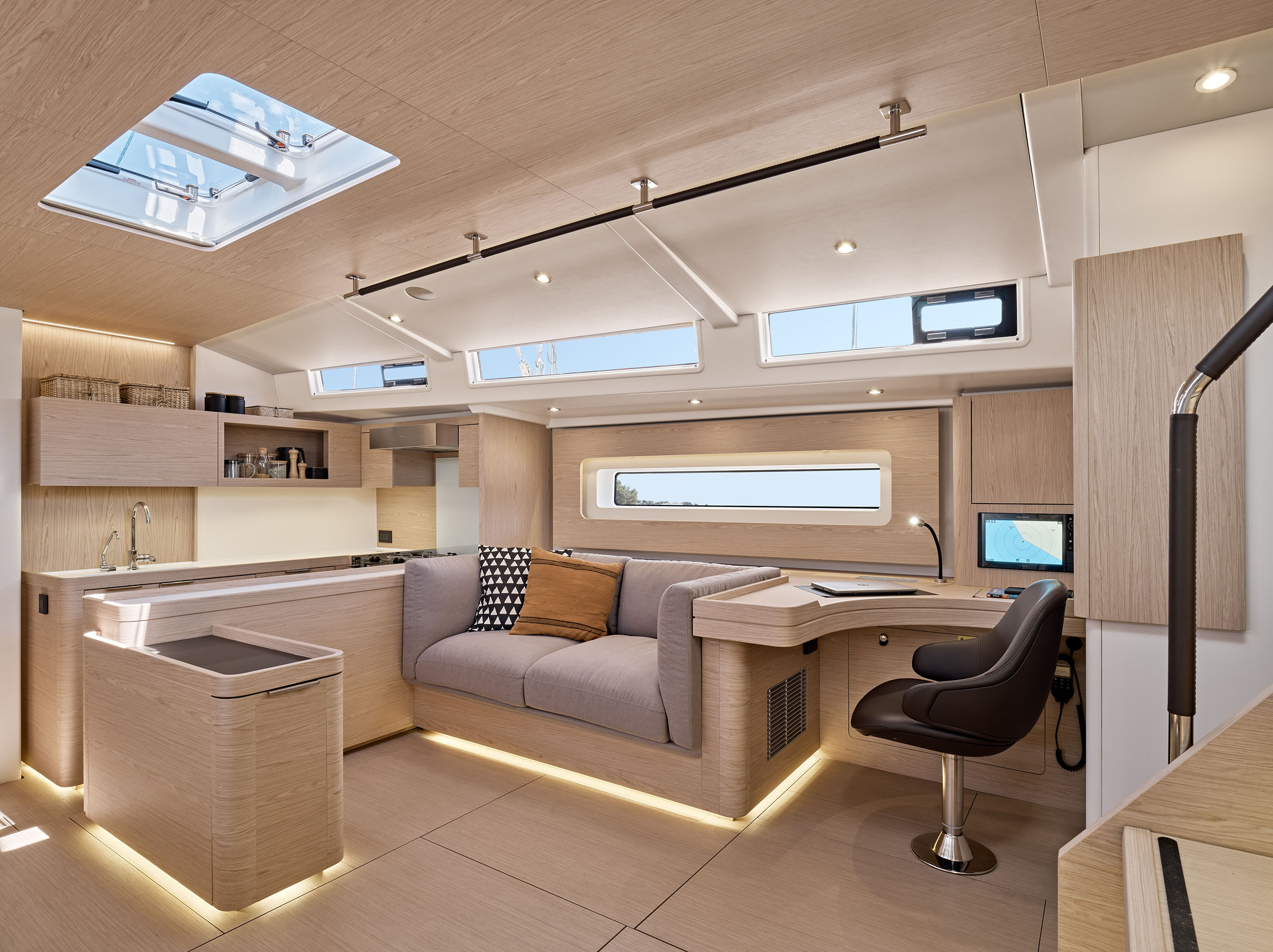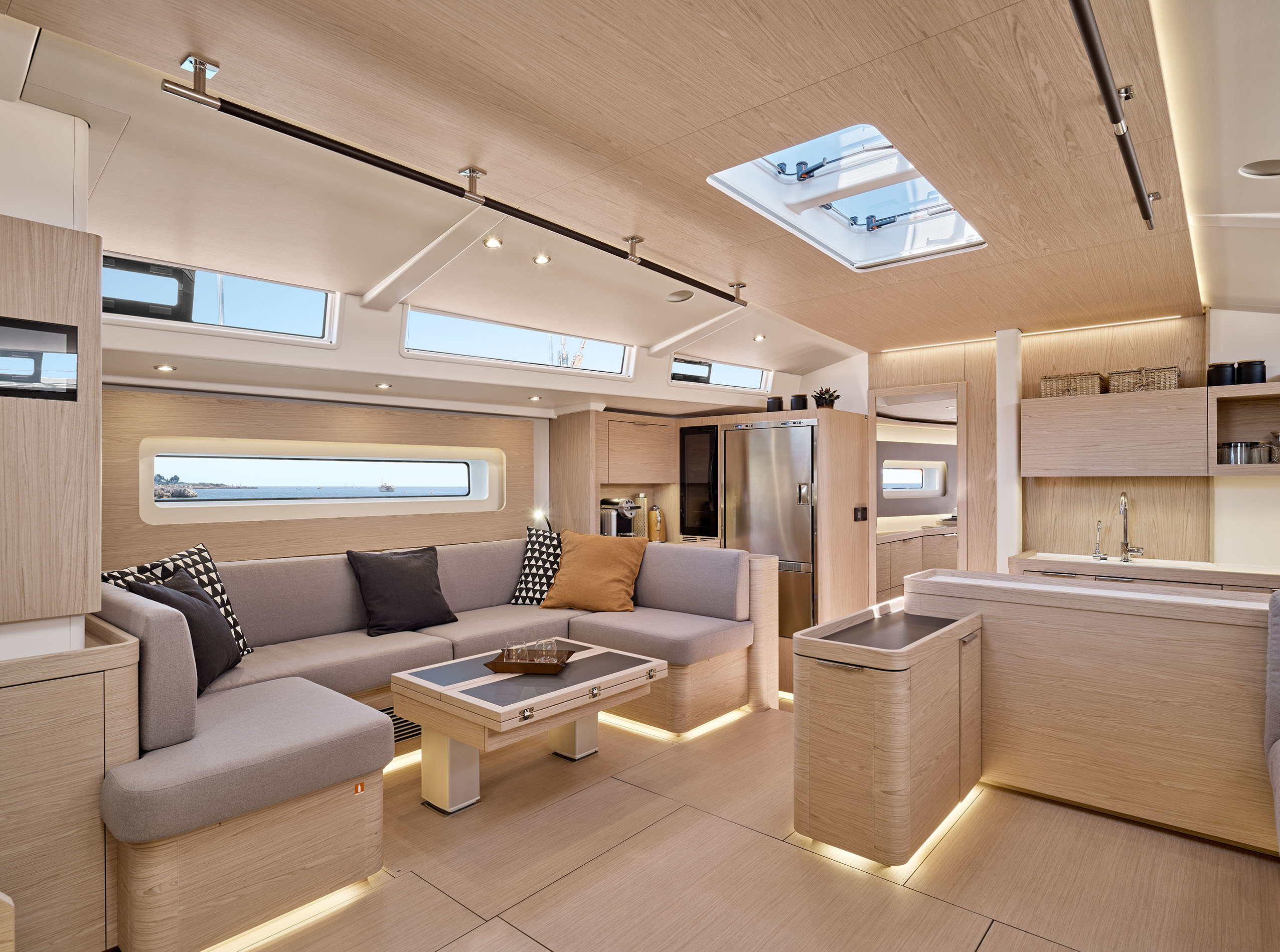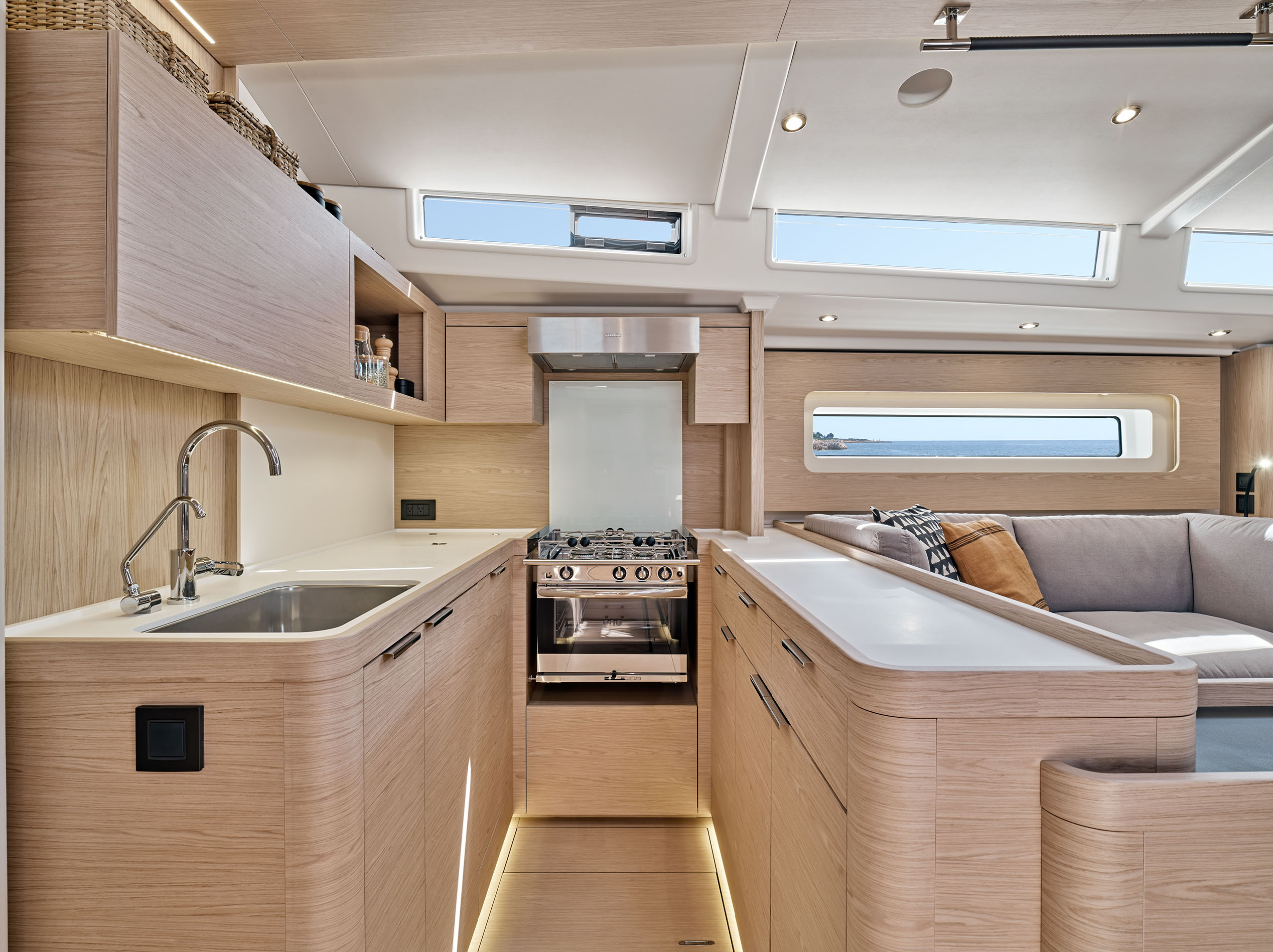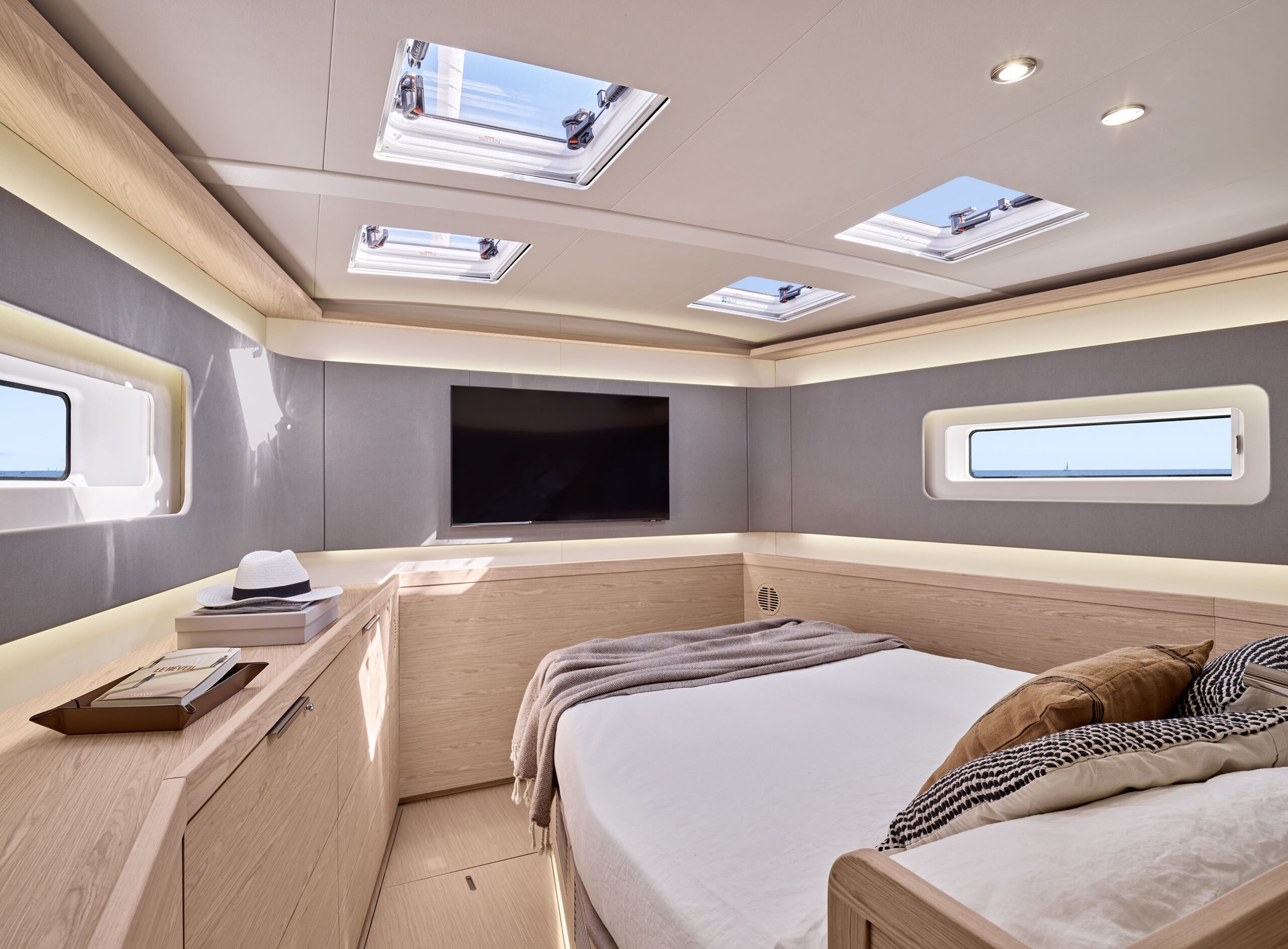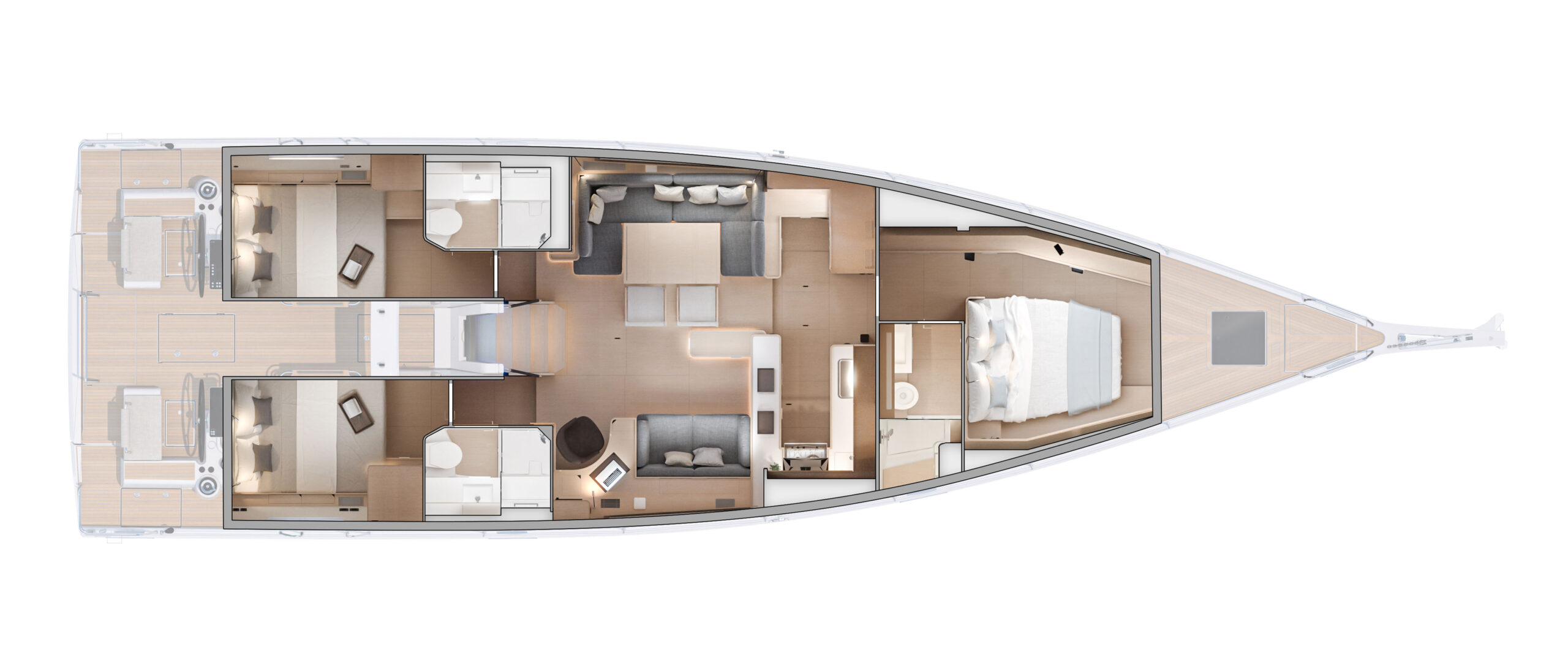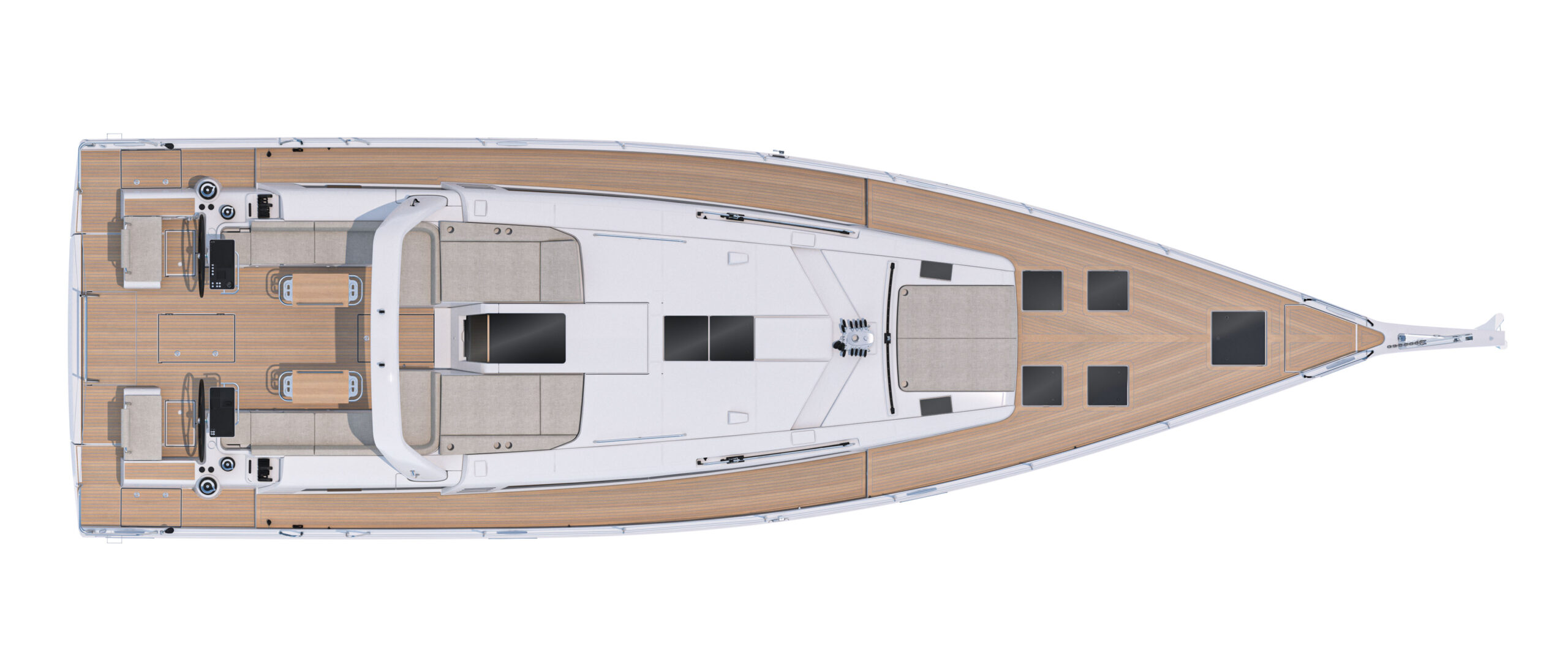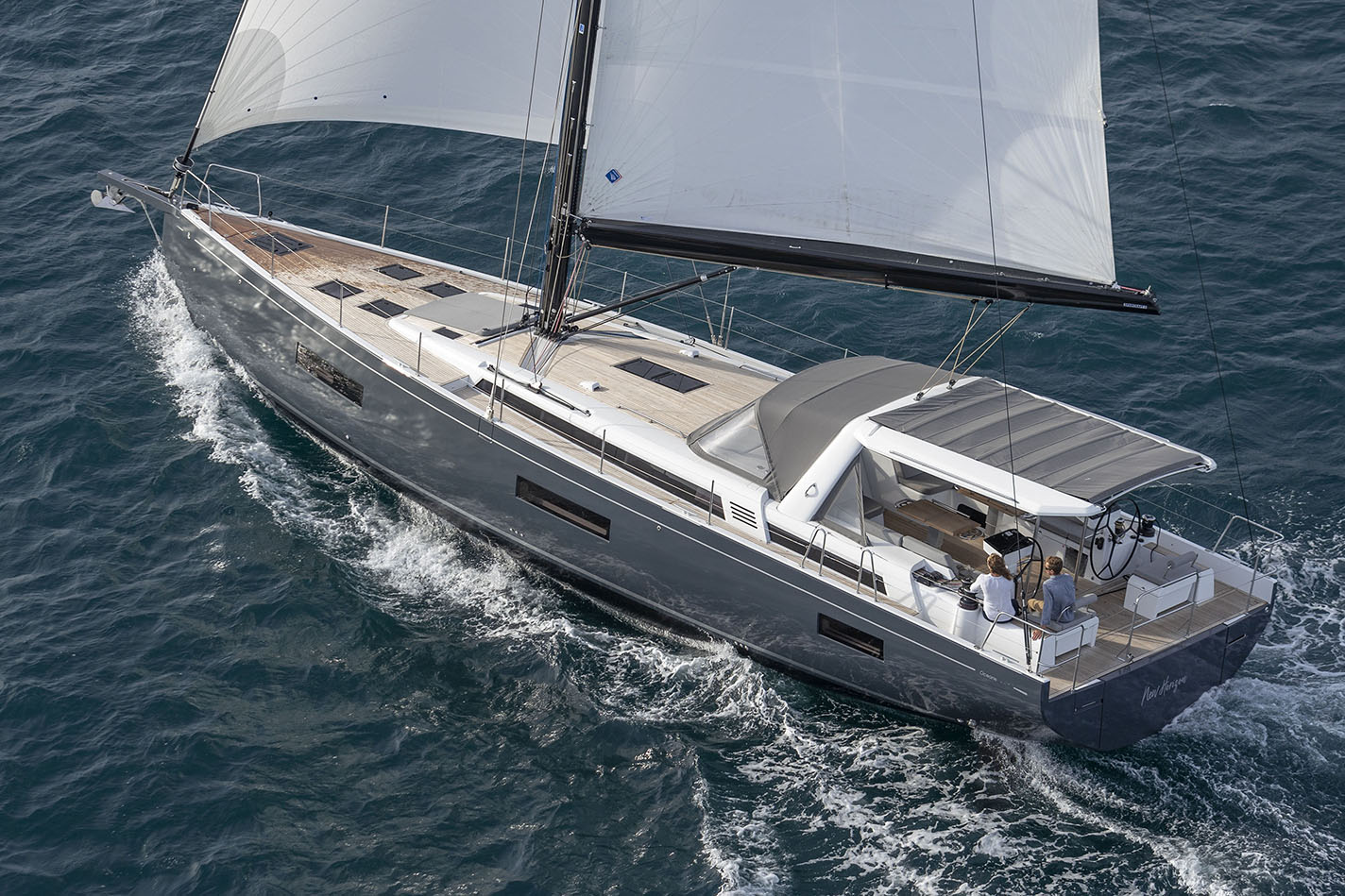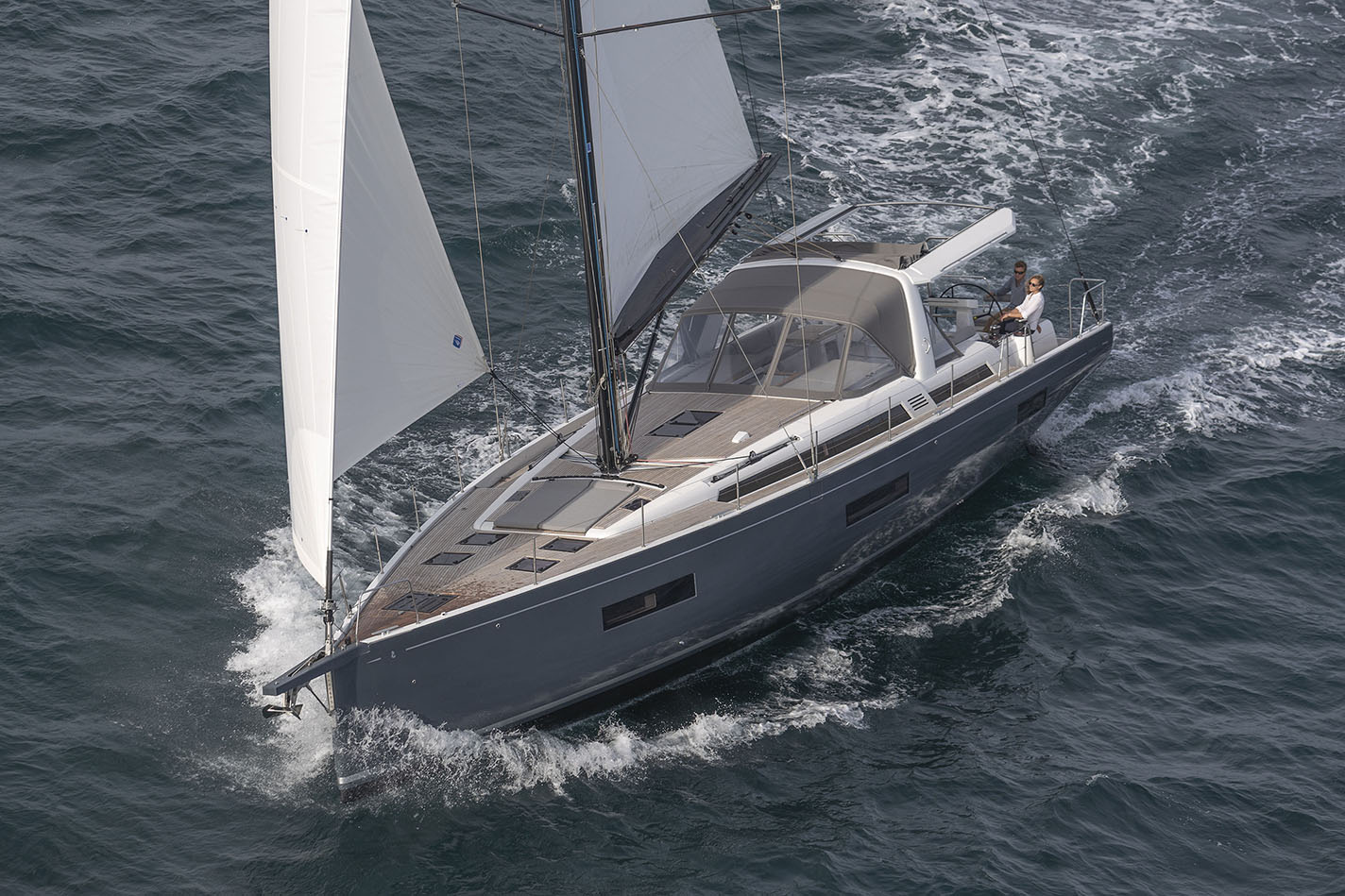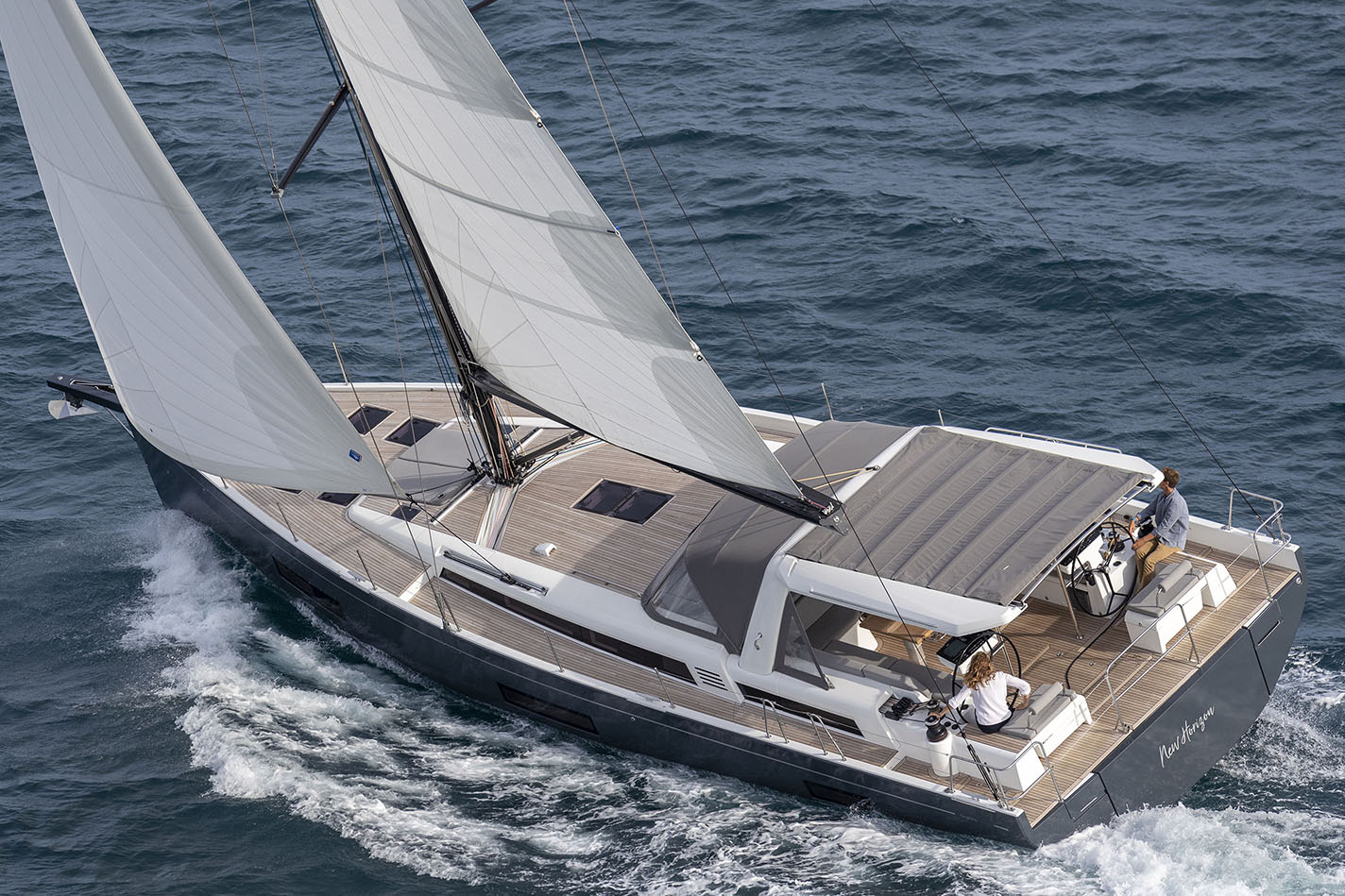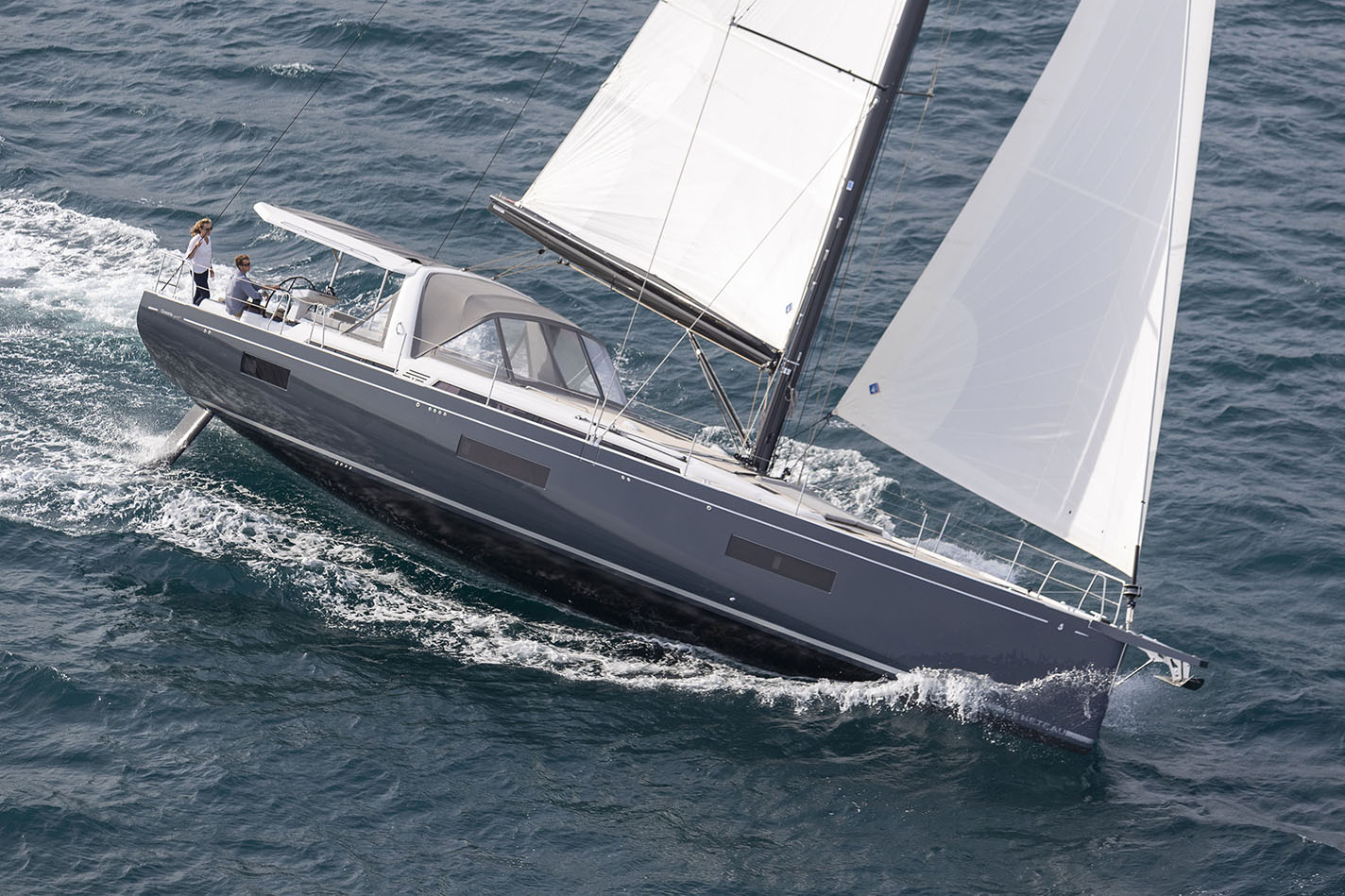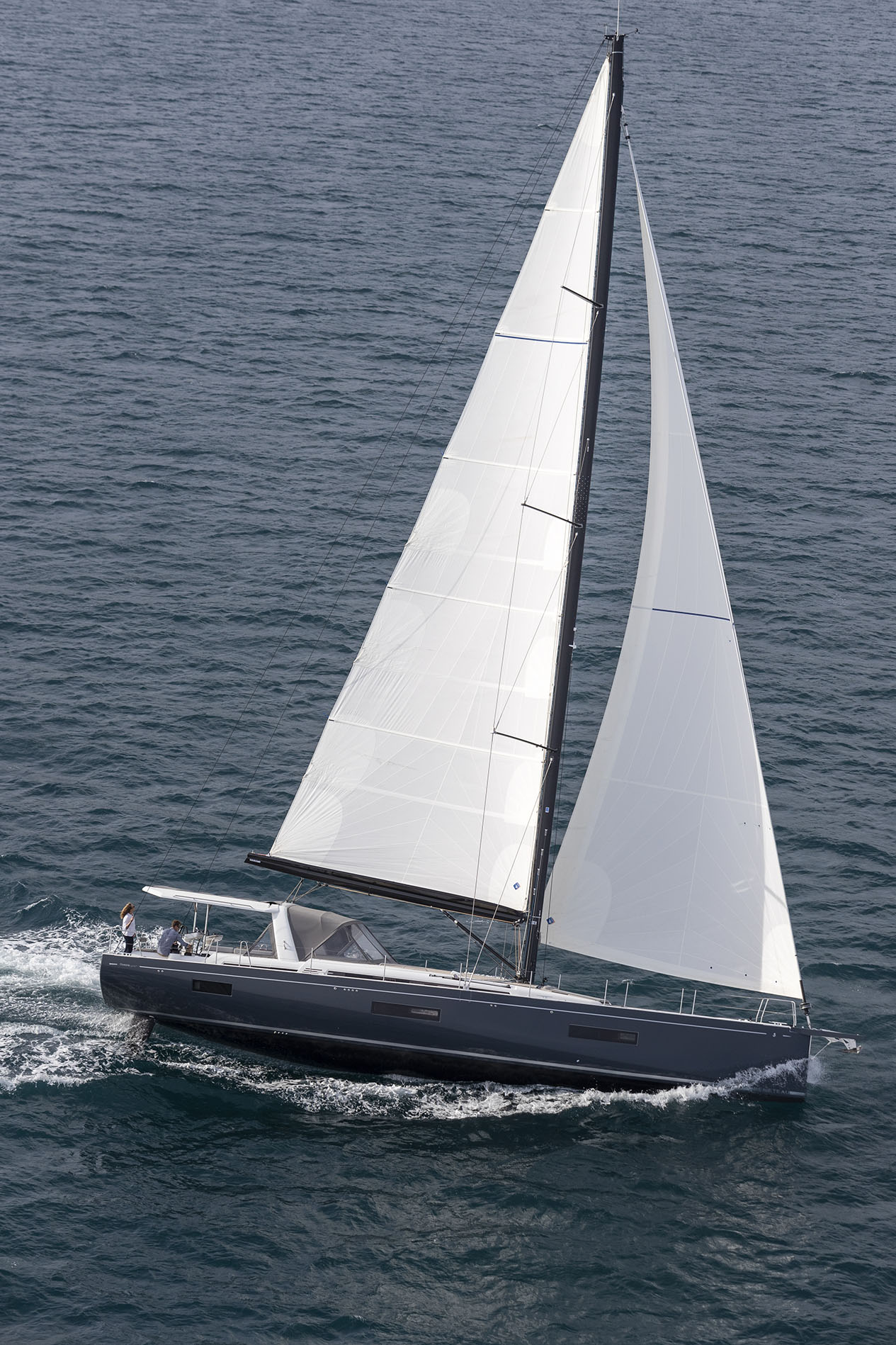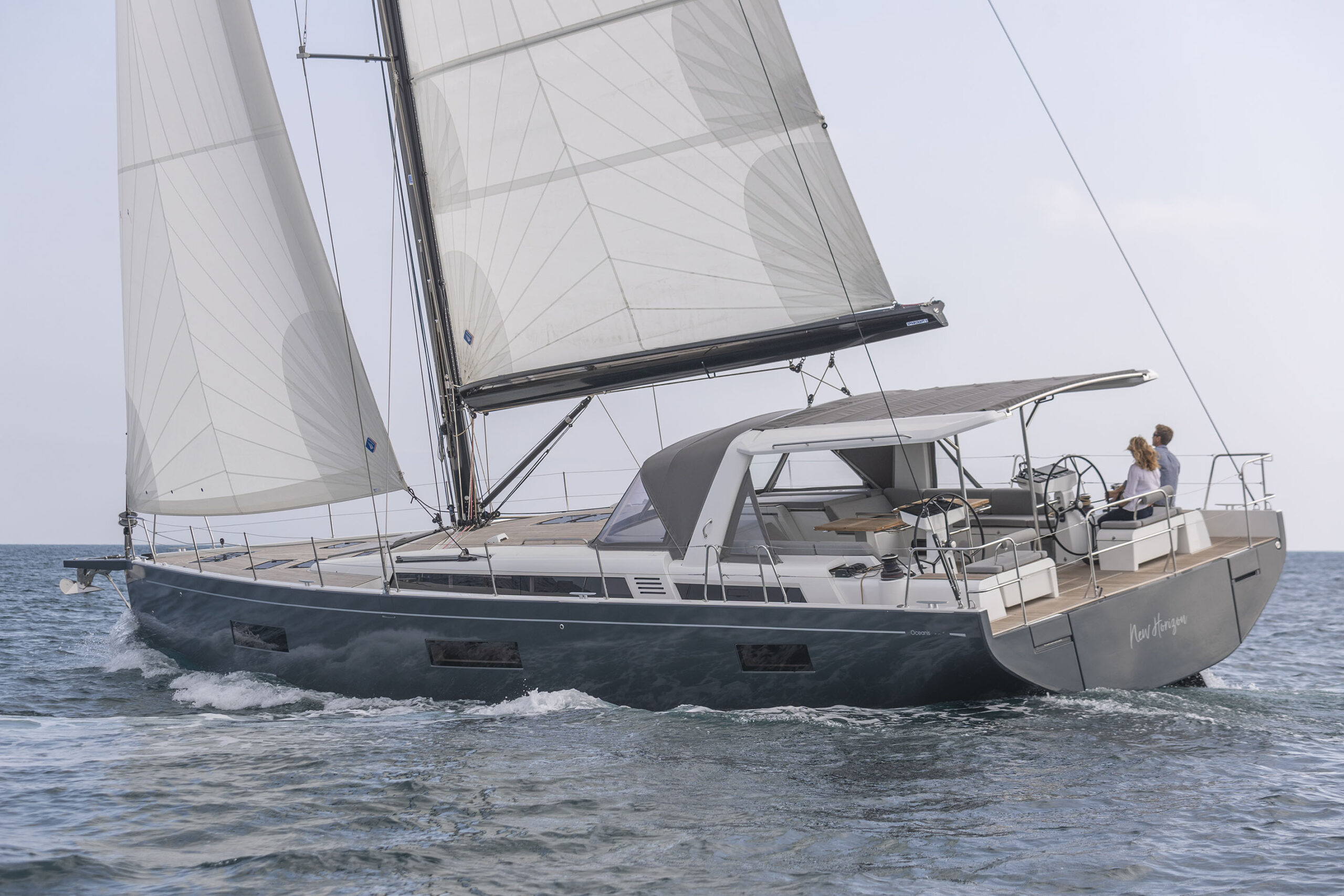Presentation
Yacht Class n°33 (june-july-august 2023)
Groupe Beneteau
The Oceanis Yacht 60 from Beneteau, the long-awaited successor to the 62, is unveiled with an elegant silhouette and interesting performances for offshore sailing. In unison, her fittings shape space and light in an astonishing way, without losing sight of comfort and ergonomics. The story of a great outing at sea.
Written by : Christophe Varène – Photos : Gilles Martin-Raget et Nicolas Claris
Starting a sail from the port of Les Sables-d’Olonne takes on a special meaning. As you take the long canal leading to the sea, you can imagine yourself as one of those brave solo sailors in the Vendée Globe ready to set off on a round-the-world tour. However, our ambition will be more reasonable, but no less interesting, since it is to discover the Oceanis Yacht 60, the new flagship of this range, also including the 54 (see test in Yacht Class N°25), and successor of the 62 that has been a great success with 80 units sold. The elements, perhaps seduced by the elegant line designed by Lorenzo Argento, decided to be favourable for a successful outing : bright sunshine, light chop and a breeze oscillating around 15 knots. With a 150 hp Yanmar diesel engine, in conjunction with stern and bow thrusters, manoeuvring in the harbour went without a hitch and, once in the open sea, the sails were set, mainsail up and genoa unfurled.
8 knots average upwind
The course begins with a run upwind and, with an apparent wind angle of between 35 and 45 degrees, the Oceanis Yacht 60 lists slightly and glides along at an average of 8 knots, a sign of a hull that was born on the drawing board at Biscontini Yacht Design. With its two rudders, she responds with precision to the helmsman’s requests. A boat for long cruises, the model in our test has a sort of hard top (the canvas can be slid to enjoy the sunshine, depending on your mood) and a bonnet with clear, transparent panels. Nevertheless, it is to be noted that the helmsman’s visibility is somewhat impaired, but fortunately he can sit on the small side bench to better monitor his sails and course. One of the benefits of this hoop is that it supports the mainsheet hoist, which does not interfere with the flow of traffic in the cockpit. Tacking is easy thanks to the winches positioned right next to the helm stations. For even greater simplicity, a self-tacking jib is available as an option, although this reduces the surface area of the front triangle. To feel this boat in all points of sail, it is time to lower the sail plan by furling the genoa and deploying a Code 3, a sail that is well designed for rising in light airs, but which also supports unbridled points of sail in the daytime breeze. Immediately, the speedometer climbs and exceeds 10, even 11 knots, gently. Perfect for long ocean crossings.
Plenty of light inside
The deck layout is also perfect, with a well-protected cockpit, side decks with two small steps (meaning interior volume) and an open front area with a solarium, as well as a deep sail locker that can optionally be converted into a crew cabin. Traffic is safe and easy, as is boarding via the bathing platform, which is the transom that tilts, with steps that deploy automatically, and opens the dinghy garage (Williams type with a 2.80 m jet). Passengers enjoy the large outside saloon with long benches, two tables leaving the central passage free and, more pleasantly when the top is stowed, two sunbeds. Ergonomic and user-friendly, the exterior of this Oceanis Yacht 60 fulfils its mission as it should, whether for manoeuvring underway – helped by the on-board Ship Control and Seanapps systems, which manage all the technical aspects of the yacht – or in port during moments of relaxation and sharing.This approach must also be reflected in the interior fittings and, to check this, you have to go down the six wide, vertical steps, which are framed by two handrails. These are very useful accessories that can also be found on the ceiling. Two atmospheres (dark walnut as standard and light oak as an option), also designed by Lorenzo Argento, are available, but the boat in our test is in the brighter one, a sensation enhanced by the sunlight coming in through the deck, deckhouse and hull windows, also a guarantee of enjoying the sea view. The vast saloon is organised with a U-shaped bench seat on the port side, with a revolving flap table whose telescopic legs create a resting area, the ideal place to watch the television whose screen retracts behind the sofa placed opposite. On the other side of the boat, the passengers enjoy a sofa, while the skipper sits at his chart table with a wrap-around swivel armchair. A central cabinet offers multiple functions : a pocket on top with its fiddles, storage underneath and a welcome support when heeling. Finally, the forward section opens on to the galley, which extends across the entire width of the boat, with the cooking equipment, washbasin and worktop on the starboard side, and the fridge, freezer, wine cellar and numerous storage spaces on the port side.
Privacy for the owner’s cabin
Through the central passageway of the galley, one reaches the owner’s cabin located at the front, with immediately upon entering the private bathroom and its large shower cubicle, which also has the merit of isolating the sleeping area for more privacy. The double bed, installed in the direction of travel, is accessible from both sides, while a storage unit runs along the port side. Here too, light takes over the space. One has to cross the saloon again to discover the guest cabins at the rear. Even if the tender garage encroaches on this part of the Oceanis Yacht 60, passengers have plenty of space at their disposal. The port side cabin is a little more privileged with a slightly larger space and a private bathroom. Indeed, on the other side, the latter is also used during the day with access from the saloon. Several small portholes contribute to the clarity and ventilation of the whole. All the fittings are sober, but of high quality, with particular attention paid to the comfort of life on board. When you return to the port of Les Sables-d’Olonne, you will find yourself longing for the open sea.
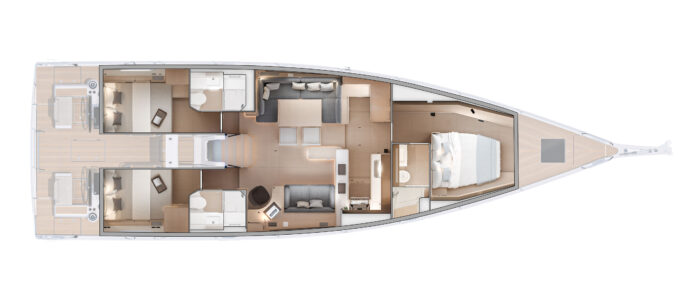
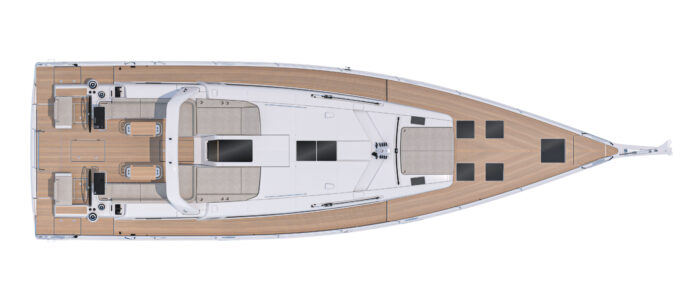
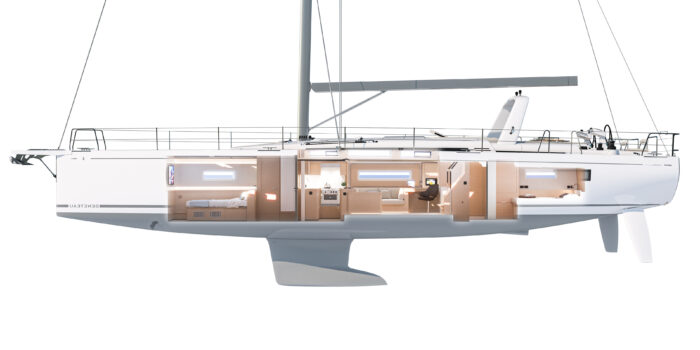
Technical sheet
